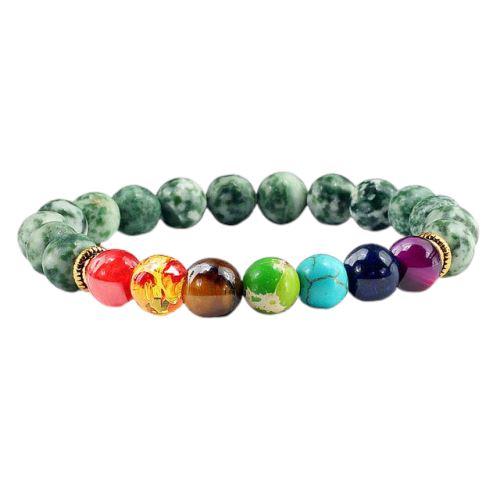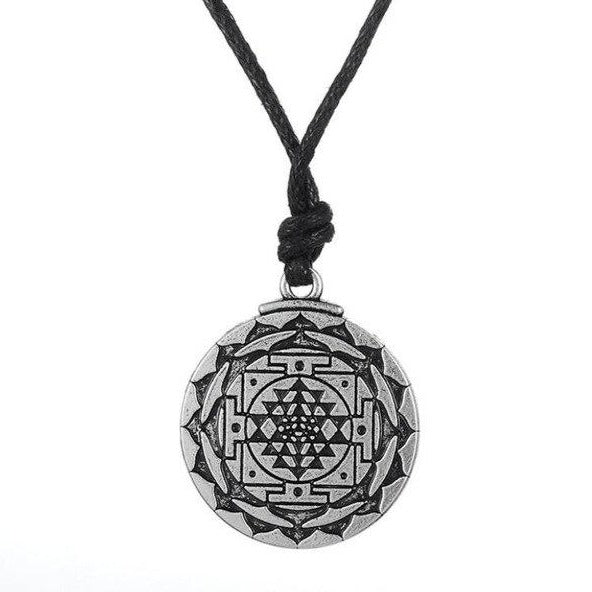The Indian lucky charm: secrets and esotericism
If India is still a very mysterious country for you, we understand. Our goal here will therefore be to offer you a discovery of some facets of this ancestral culture thanks to a central element of the country: the Indian lucky charm.
If you have already had the chance to travel in the country, you know that what characterizes Indian streets is a certain excitement, a teeming life. This could come from the concentration of inhabitants per square kilometer. This explanation does not satisfy us.
We are indeed convinced that it is the richness of Indian culture which creates this impression. Brahma, Vishnu, Ganesh, Shiva... These names may mean something to you. They are in fact the best known gods among the 330 million in India. Oh yes, nothing more.
Often influenced by the religions of this country (namely mainly Buddhism, Jainism and Hinduism), the Indian lucky charm generally has a high symbolic and spiritual value.
History has shown us: reckless travelers sometimes abuse spiritual practices that are too intense for them.
This can be understood when we see the greatness of what this people have been able to build throughout history. However, let us never forget this saying: “Prudence is the mother of safety”. In the world of Indian lucky charms, be sure that temperance will be your best ally.
With Ayurveda (traditional Indian medicine), colorful Bollywood films and colorful festivals full of scents of spices and incense, India is a country of enigmatic beauty.
In short, if you also want to unravel some of the secrets of one of the most mysterious countries in the world, we can help you.
Hinduism: emblematic religion of India
Hinduism (the main lucky charms of which you will find here) is the oldest religion in the world. According to many passionate historians of India, its roots go back more than 4000 years.
4000… Yes, that’s a lot.
To understand Indian culture, we must understand that there is no single and “absolute” Hindu text like the Bible for Christians or the Koran for Muslims. Instead, Indian sages developed a body of texts numbering in the thousands of distinct manuscripts.
This also makes us understand why the Hindu religion was mainly transmitted orally : all these sacred texts could not have been widely spread before the invention of printing.
Some were even downright confidential (or even secret), then reserved for an esoteric elite forming real sects (in India, this term does not have the pejorative character that it has here).
We might as well tell you that the meaning of certain Indian lucky charms will sometimes relate to this type of hidden knowledge!
Another unique feature of Hinduism is the incredible number of deities they worship. Experts often speak of 330 million entities.
Obviously, these gods are not all of the same importance.
Ganesh for example, the elephant god, is the master of everything relating to success, wealth, intelligence and knowledge. (I might as well tell you that it will be the subject of many Indian lucky charms).
Shiva, for his part, is seen as the great destroyer with whom death, but also meditation and the arts, is associated.
A power contrary to Shiva, Brahma is the primordial creator of our world and of other divinities.
The Buddha's place in India
The Indian people are predominantly Hindu, that is obvious.
However, there are other trends within the country. To ignore them would be stupid because we would undoubtedly miss out on exceptional Indian lucky charms.
Buddhism, for example, was created following the exceptional life of a prince born in the Indus Valley, the famous Siddhartha Gautama (later Buddha).
The main goal of Buddhism is to bring souls out of eternal reincarnation, this can only be done through sufficient purification.
Concretely, Buddhists preach the abandonment of excesses and desires, as well as the doctrine of the “middle way ”.
Even Indians who do not practice it are necessarily influenced in one way or another by this philosophy: Buddhism has indeed had a major impact on morals, habits, customs and culture in India.
An Indian lucky charm appearing to belong to another religion could therefore also be imbued with it…
Today, Buddhism practiced in the country respects the teachings of two schools. In Northern India, Tibetan Buddhism is the majority, while practitioners in the rest of the country follow Theravada Buddhism.
So it's obvious: the Buddhist lucky charms that we have collected here are all necessarily linked to Indian culture.
Jainism: third major Indian religion
Jainism originated in India around the same time as Buddhism. Less widespread and undoubtedly less known to the general public, this religion is nevertheless of rare richness and, this is what interests us for our part, has been the source of famous Indian lucky charms.
One of the main ideas that drives Jains is that there is life in everything (stone, tree, plant, animal, human, etc.) and that each form of life is valuable.
Absolutely, crushing an ant is something terrible for them.
Apparently, this rather particular idea would have emerged in India because it is the only region in the world where the concept of reincarnation is so present.
If in fact we can reincarnate into any living being according to our karma, the idea of respecting each life takes on its full meaning.
When you find an Indian lucky charm linked to Jainism (in your travels, on our site or wherever you want), try to analyze it through this notion of absolute importance of life.
Other notable features of the Jain religion are the belief in what is right, the notion of right knowledge and the importance of good deeds in daily life.
Mandalas: Indian lucky drawings with astonishing capabilities
A mandala is a kind of circular and concentric design. Very pleasant to look at, this type of motif actually has great spiritual importance in India.
To put it simply, mandalas are associated with the universe itself and its essence.
In fact, the circular side of these Indian lucky drawings expresses the idea that life is infinite (with a strong notion of reincarnation).
Some gurus also say mandalas represent the spiritual journey that those who look at them can undertake.
The idea of drawing such circular patterns actually goes back so long that it's difficult to unlock all of their secrets. One of the oldest texts of Indian civilization, the Rigveda (written more than 3000 years ago) already used the word mandala and was already used to designate sacred mantras chanted during religious ceremonies.
In short, the mandalas we see today do not have the sole purpose of conveying messages or being pretty.
Their design is in fact designed to transport those who watch them to second states. Some have reported spectacular trances after meditating on sacred mandalas, while others have spoken outright of cosmic projection or decorporation.
To put it simply, the main use of mandalas is a very popular form of meditation in India aimed at acquiring certain esoteric knowledge.
One thing is certain: the secrets of mandalas are still numerous, and their title of Indian lucky charm has not been stolen!
The Om, symbol and its original
We could not approach the subject of the Indian lucky charm without talking about the symbol of Om.
Already, it is the unofficial (but still very widespread) emblem of most Indian religious movements.
Then, you just have to look at it for a few moments to understand all the beauty that can emanate from it.
In fact, the different curves of the Om symbolize the different states of mind through which we pass on the path to enlightenment.
From bottom to top, we move from a “sleeping” state to increasingly “awake” states, ultimately reaching the point overlooking this Indian symbol, synonymous with the accomplishment of our quest.
This is a resolutely positive meaning for this Indian lucky charm!
Om, in addition to being a sacred motif in India, is one of the most important mantras. .. perhaps even the most important in fact.
The Indians believe that "Om" was the first sound to resonate in the universe at the time of its creation, a sort of great original sound that we can still hear vibrating today if we know how to listen.
Chanting its form of mantra, sometimes for hours, is also known to produce powerful effects on humans.
Relaxation, deep relaxation, peaceful meditative states: truly, Om connects us to our spirituality and our consciousness like no other sound.


















